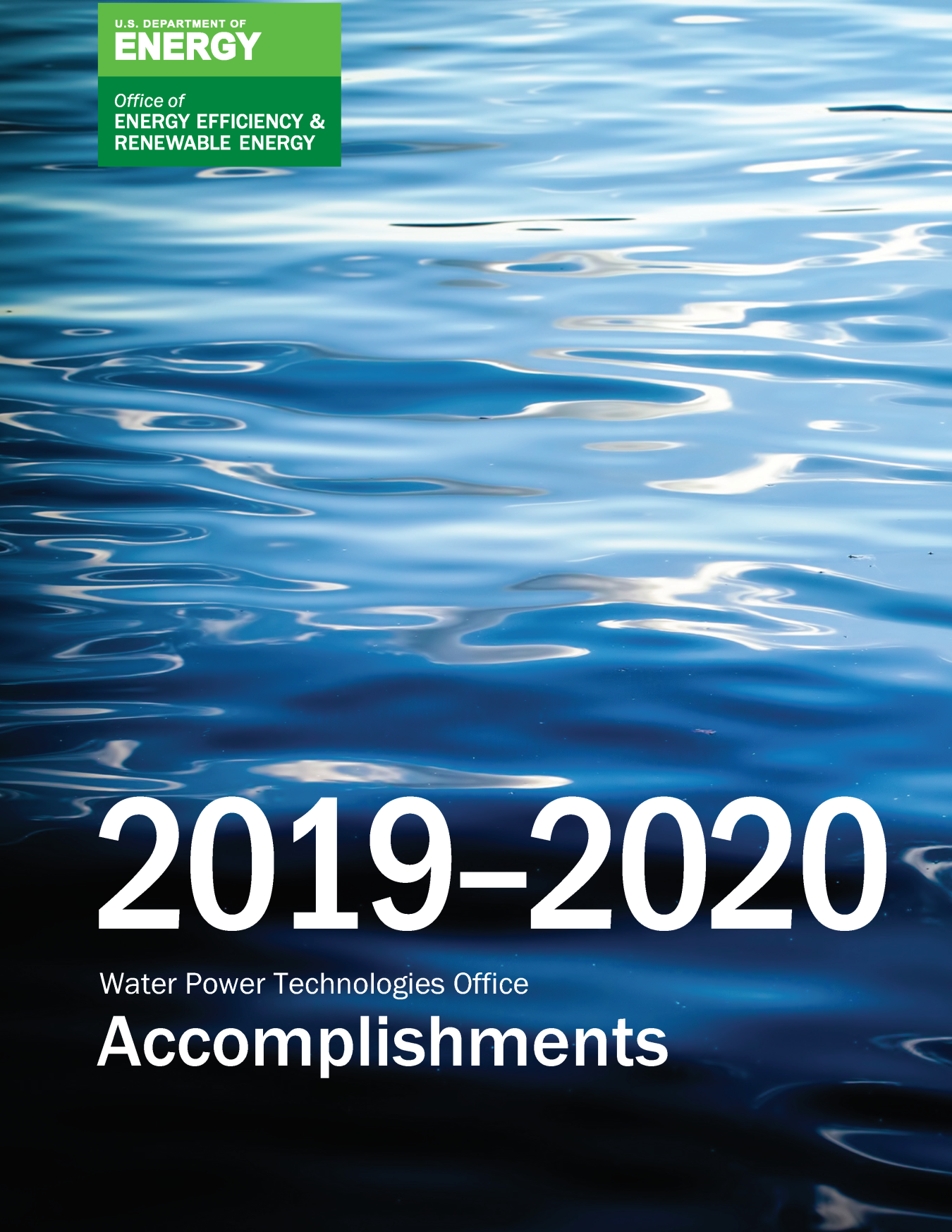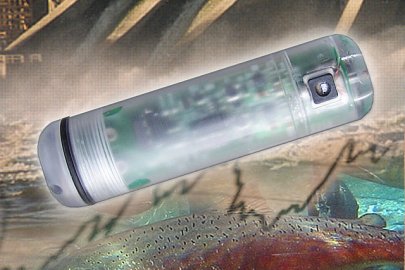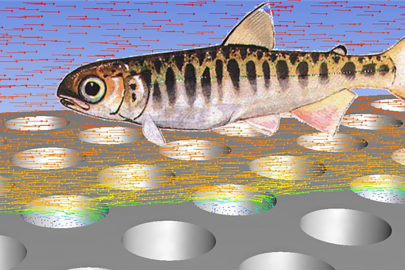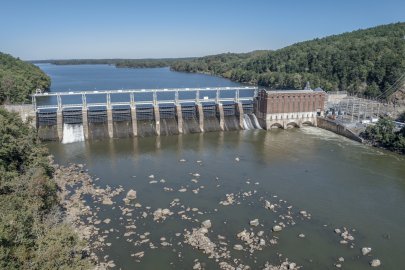Under the HydroPASSAGE project, PNNL and ORNL are providing new information that can be used to increase fish survival and lower operational costs.
Water Power Technologies Office
January 13, 2021From Fiscal Year (FY) 2019 to FY 2020, WPTO’s HydroPASSAGE project, a multiyear R&D collaboration between PNNL and ORNL, successfully tested, licensed, and commercialized a number of tools to reduce fish injury and mortality of entrained fish as well as lower the regulatory costs of licensing and operations. HydroPASSAGE leverages more than 25 years of research to develop novel instruments and software tools that can be used by turbine manufacturers, hydropower facility owners, consultants, and scientists carrying out fish impact evaluation studies of hydropower turbines and facilities.
Tools and technologies developed under HydroPASSAGE use biological design criteria from scientific, validated predictions of impacts to fish from turbine passage. Two cornerstone tools within the project’s portfolio include the Biological Performance Assessment (BioPA) Tool and Hydropower Biological Evaluation Toolset (HBET), which use hydraulic condition-based information to provide predictions on the impacts to fish for both existing and new turbines being designed. While BioPA applies modeled, computational fluid dynamics data often supplied from turbine manufacturers, HBET enhances the design process by using biologically-based field data from the Sensor Fish—a small, autonomous instrument filled with sensors that analyze the physical stresses fish may experience when passing through or around dams. A smaller Sensor Fish Mini has also been developed, which focuses on gathering data from smaller hydropower structures.
In 2019, with support from the DOE Technology Commercialization Fund, Oregon’s Hood River Valley provided an ideal field-testing location for several HydroPASSAGE tools, including the Sensor Fish and HBET, as well as the Sensor Fish Mini, which made its debut field trial.
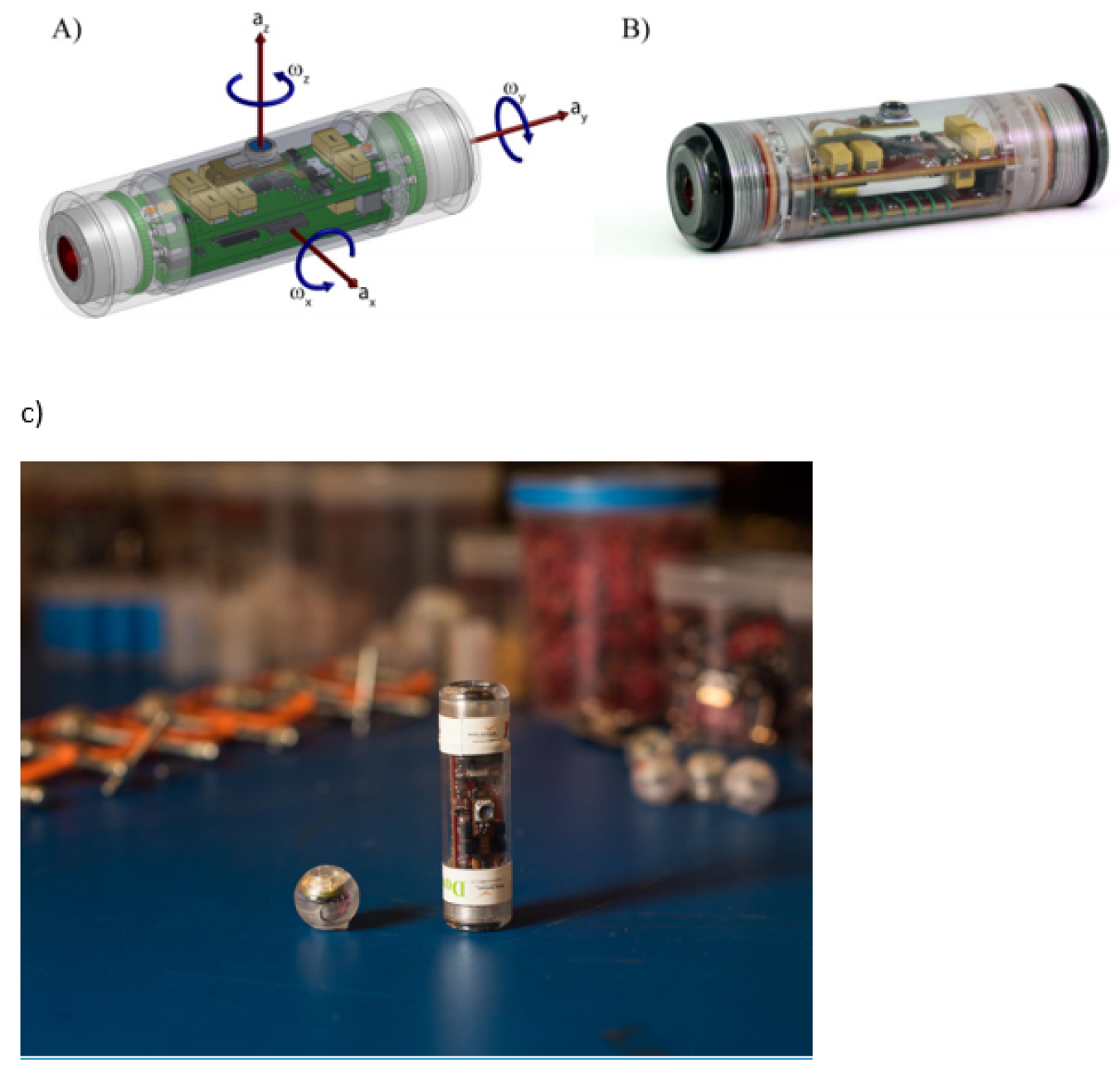
PNNL led the study, which sought to evaluate the effectiveness of fish passage after installing a series of screens designed to enable safe downstream passage for fish at irrigation structures. During testing, only one Sensor Fish Mini experienced any kind of issue in migrating through the screens. These data are important for validating the use of new screens for improved fish passage and verifying that the Sensor Fish technology can be applied in other tests to evaluate the integrity of hydraulic passage structures.
Building off of the 2019 tests in Oregon, in early 2020 PNNL worked with the U.S. Army Corps of Engineers on a more expansive field test of the Sensor Fish at Ice Harbor Dam in Washington State. PNNL researchers released and collected data from more than 900 Sensor Fish at three different elevation levels throughout the testing campaign. Ice Harbor is a major dam within the Federal Columbia River Power System, and recently had some of its turbines replaced with the primary goal of improving fish passage survival. Using the Sensor Fish and its associated suite of computational tools, PNNL characterized the physical conditions of one of the dam’s turbines and compared its passage conditions with the results from a 2015 baseline assessment of the original turbine. Overall, the preliminary results showed the new turbine’s fish passage hydraulic conditions had significantly improved, with an estimated 98% survival rate calculated for juvenile salmon.
Currently available for purchase, the intellectual property for the Sensor Fish was recently licensed to Advanced Telemetry Systems, which has gone on to manufacture and deploy the technology in several countries. Additionally, two new BioPA and four new HBET licenses were also executed in FY 2020, with licensees comprising a combination of owner/operators, original equipment manufacturers, environmental and engineering consultants, and research institutions. Between licensing, field testing, and other lab-based work, the HydroPASSAGE team was also able to publish three new peer-reviewed publications in FY 2020, which can be accessed on the project website for further reference.
For additional information, contact TJ Heibel.


